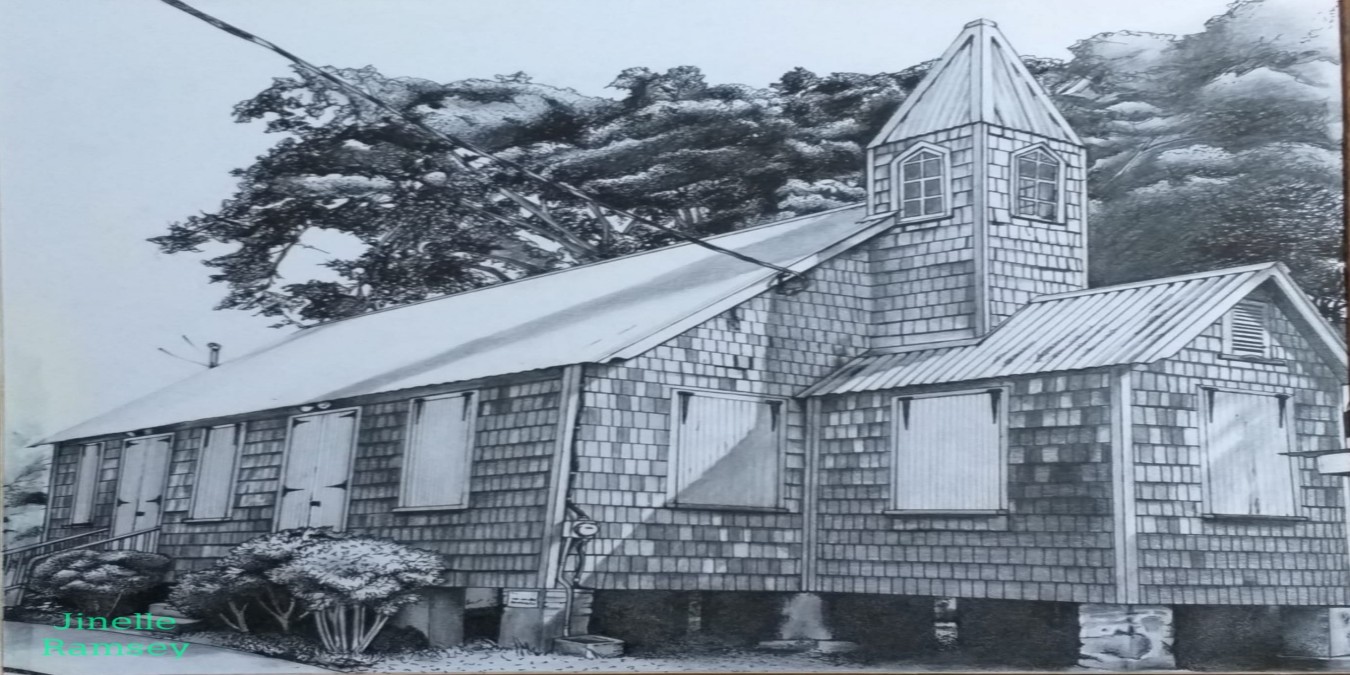Featuring a pencil rendering by Jinelle Ramsey
Located in the serene coastal village of Black Rock, the Black Rock Moravian Church stands as a quietly enduring monument to Tobago’s colonial history and spiritual legacy. Established in the late 19th century by Moravian missionaries, the church has long served as a vital center of worship, education, and communal life for the surrounding community.
Its architecture, featuring a timber frame, hand-laid wooden shingles, and an elevated foundation, epitomises the adaptive craftsmanship of the Caribbean’s post-emancipation era. These design choices reflect both practical responses to the tropical climate and deeper cultural expressions of permanence and resilience.
More than a religious structure, the Black Rock Moravian Church represents a living chapter in Tobago’s story, where African heritage, European missionary influence, and local traditions converge. Set against the lush backdrop of Tobago’s leeward coast and within walking distance of Turtle Beach, the church remains a meaningful site for heritage tourism and historical inquiry.
This pencil illustration by Tobago artist Jinelle Ramsey masterfully captures the character and quiet dignity of the structure. Through fine detail and tonal nuance, her work pays homage not only to the church’s physical form but also to its enduring place in the island’s cultural landscape.


Comments